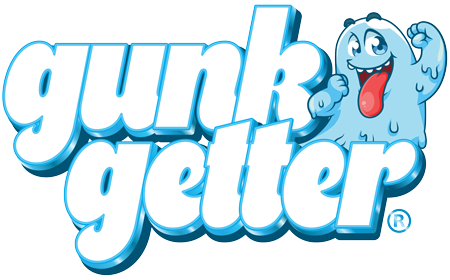In a world overwhelmed by clutter, the minimalist approach to cleaning offers a breath of fresh air. This method is not just about tidiness; it’s about creating a serene space that promotes clarity and peace of mind. If you're looking to transform your cleaning routines and embrace a more simplified lifestyle, this guide to minimalist cleaning is for you. In this article, we’ll explore the transformative power of minimalism in cleaning, practical tips to get started, and how to maintain a curated living environment that reduces stress and saves time.
What is Minimalist Cleaning?
Minimalist cleaning is a philosophy that goes beyond the act of keeping your home tidy. It's about understanding the relationship between your possessions and your well-being. By reducing clutter, you can enhance your living space and find more time for what truly matters. The key principles include:
- Simplicity: Focus on keeping only items that add value to your life.
- Intentionality: Every item has a purpose, and spaces are curated with care.
- Efficiency: Cleaning becomes streamlined, involving fewer tools and products.
Why Choose Minimalist Cleaning?
The benefits of adopting a minimalist approach to cleaning are numerous. Here are just a few:
- Less Stress: A clutter-free environment reduces anxiety and helps you focus.
- More Time: Fewer items mean less time spent cleaning and organizing.
- Sustainability: Minimalism encourages conscious consumption and waste reduction.
Getting Started with the Minimalist Cleaning Approach
Ready to dive into a minimalist cleaning journey? Here are some actionable steps to guide your process:
1. Evaluate Your Space
Begin by assessing each room in your home. Identify areas that feel cluttered or overwhelming. Ask yourself the following questions for each item you come across:
- Do I use this item regularly?
- Does this item hold sentimental value?
- Am I keeping it for the sake of keeping it?
Items that don’t serve a purpose or bring joy should be considered for removal.
2. Start Small
When approaching minimalist cleaning, it’s important to start small. Begin with a single drawer or a specific corner of a room. Completing small tasks can enhance motivation and gradually lead to larger cleaning projects.
3. The One-Year Rule
If you haven’t used an item in a year, it may be time to let it go. This guideline can help you determine which possessions are essential and which are not.
4. Categorize Your Items
Use categories to organize your belongings further. Common categories might include:
- Keep: Items you use regularly.
- Donate: Items in good condition that you no longer need.
- Discard: Items that are broken or unusable.
Sorting your items helps you make informed decisions about what to keep and what to part with.
Cleaning Products and Tools for Minimalists
The goal of minimalist cleaning doesn’t just stop at decluttering; it also extends to the cleaning products you use. A minimalist cleaning kit typically includes:
- A versatile all-purpose cleaner
- A microfiber cloth
- A vacuum cleaner
- A mop for hard floors
By limiting the number of cleaning products, you simplify your routine and reduce chemical exposure in your home.
Eco-Friendly Cleaning Solutions
While embracing minimalism, consider adopting eco-friendly cleaning solutions that are safer for both your health and the environment. Simple ingredients like vinegar, baking soda, and lemon can be used to create effective cleaning solutions without harmful chemicals.
Creating a Cleaning Schedule
Establishing a cleaning schedule is crucial in maintaining a minimalist environment. Here are some tips:
- Daily Tasks: Focus on quick tasks such as tidying up and wiping surfaces.
- Weekly Tasks: Set aside time for more thorough cleaning, such as vacuuming and mopping.
- Monthly Tasks: Dedicate time to declutter and reinvestigate your spaces for any items that may no longer serve you.
Having a schedule reduces the likelihood of accumulating clutter over time and keeps your space consistently fresh.
The Mindset Shift
Beyond physical cleaning, embracing a minimalist lifestyle involves a total mindset shift. Here are some strategies to help:
1. Shift Your Perception of 'Stuff'
Realize that owning fewer items does not mean having less. Instead, it means having more space, tranquility, and time. A shift in focus from quantity to quality will enhance your appreciation for what you own.
2. Practice Gratitude
Be grateful for the items you choose to keep. Show appreciation for the functionality and beauty they bring into your life. This practice will affirm your decision to embrace minimalism.
3. Foster a Continuous Decluttering Habit
Make decluttering a part of your lifestyle, not just a one-time event. Regularly evaluate your belongings and reassess their purpose and value in your life.
Making Minimalist Cleaning a Lifestyle
The minimalist approach to cleaning should extend beyond your physical space to encompass your overall lifestyle. Here are some additional ideas:
- Mindful Consumption: Be intentional with your purchases. Buy only what you truly need.
- Digital Minimalism: Streamline your digital life by decluttering files, emails, and social media accounts.
- Quality Over Quantity: Invest in high-quality pieces that you love and that serve a purpose in your life.
Your Minimalist Journey Awaits
Embracing the minimalist approach to cleaning opens up a world of possibilities. By simplifying your environment and cleaning routine, you create a sanctuary that nurtures your well-being. As you embark on this journey, remember to be patient and kind to yourself. Minimalism is a process that takes time, but the results are undoubtedly rewarding. So gather your cleaning supplies, start decluttering, and watch how a minimalist approach can transform not just your home, but your entire life.


Share:
The Ultimate Pet Owners' Guide to Household Cleaning: Keep Your Space Fresh and Furry-Friendly
Conquer Stains Like a Pro: Essential Tips for Tackling Tough Stains on Various Surfaces